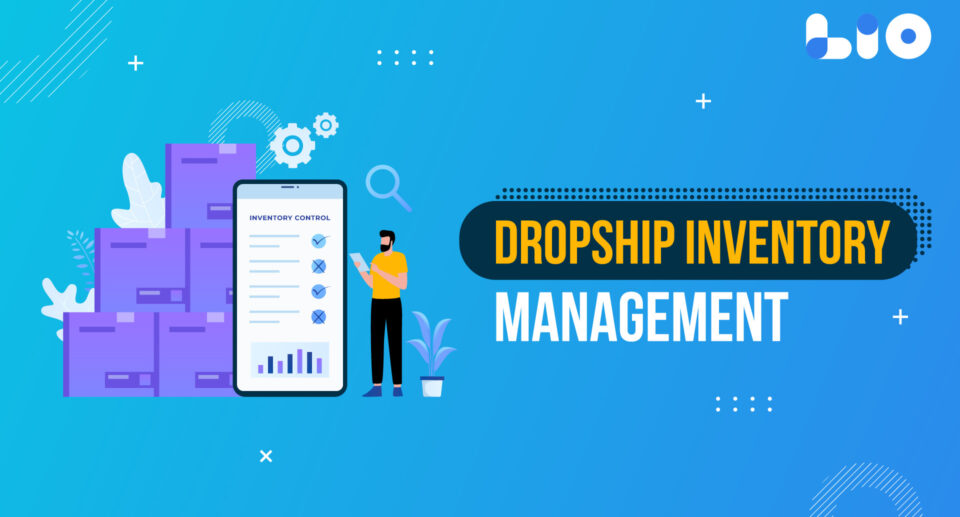Dropship Inventory Management: Everything You Need to Know

Want to know about Dropship Inventory Management? Read the article to know everything about it and more.
Dropshipping has become a popular business model, especially for entrepreneurs who don’t want to invest in inventory. Dropshipping allows retailers to sell products without actually stocking them.
Instead, the retailer purchases products from a third-party supplier who then ships them directly to the customer. However, managing dropship inventory can be challenging. In this article, we will explore dropship inventory management and how it can be optimized for a successful business.
What is Dropshipping
Dropshipping is a retail fulfillment method where a store doesn’t keep the products it sells in stock. Instead, when a store sells a product, it purchases the item from a third party and has it shipped directly to the customer. As a result, the merchant never sees or handles the product. This means the merchant doesn’t have to invest in inventory, warehouse space, or deal with shipping and handling.
The process of dropshipping involves the following steps:
- The customer places an order on the merchant’s website.
- The merchant forwards the order and customer details to the supplier.
- The supplier prepares the order and ships it directly to the customer, with the merchant’s branding on the package.
Dropshipping has become popular among entrepreneurs because it allows them to start an online business with minimal startup costs and risks. However, it also comes with some challenges, such as the need to find reliable suppliers and manage customer expectations regarding shipping times and product quality.
Benefits of Dropshipping
Dropshipping is a business model where a retailer does not need to hold inventory physically but instead relies on a supplier to fulfill the orders. Dropshipping has gained a lot of popularity over the years because of its numerous benefits, some of which are discussed below.
Low Startup Costs
Dropshipping requires very minimal capital investment, which makes it an attractive option for entrepreneurs who want to start an dropshipping business. Unlike traditional retail models, dropshipping does not require the retailer to purchase inventory upfront, which reduces the initial investment required.
No Need For Physical Space
Since the retailer does not need to hold inventory physically, they do not require a physical space to store their products. This means that they can operate their business from anywhere, which gives them more flexibility and reduces overhead costs.
Large Product Selection
Dropshipping enables retailers to offer a wide variety of products to their customers without having to purchase them in bulk upfront. They can list as many products as they want on their online store without worrying about managing inventory or investing in storage space.
Reduced Risk
One of the biggest risks of traditional retail models is the possibility of holding excess inventory that does not sell, resulting in losses. With dropshipping, retailers do not need to worry about inventory management and can avoid the risk of holding unsold inventory.
Easy to Scale
Dropshipping is a scalable business model that allows retailers to grow their business without worrying about inventory management or storage space. As the business grows, the retailer can simply work with more suppliers to fulfill their orders.
Lower Shipping Costs
Since the supplier ships the products directly to the customer, the retailer can save on shipping costs, which can be a significant expense in traditional retail models.
In conclusion, dropshipping offers a low-risk and low-cost way for entrepreneurs to start an online business with a large product selection, flexibility, and scalability.
How Dropship Inventory Management Can Be Optimized For A Successful Business

Dropship inventory management can be optimized in various ways. Let us read the different ways.
Understanding Dropship Inventory Management
Dropship inventory management refers to the process of managing inventory when using a dropshipping model. It involves keeping track of inventory levels, placing orders with suppliers, and ensuring timely delivery to customers.
Benefits of Dropship Inventory Management
Dropship inventory management offers several benefits, including:
- Lower costs: Dropshipping eliminates the need to invest in inventory, reducing costs associated with warehousing and storage.
- Scalability: Dropshipping allows retailers to expand their product offerings without worrying about inventory management.
- Flexibility: Dropshipping allows retailers to test new products without committing to inventory.
Challenges of Dropship Inventory Management
Despite the benefits of dropshipping, it comes with its own set of challenges. The primary challenge is ensuring that suppliers have sufficient inventory levels to meet demand. Other challenges include:
- Delayed shipments: If suppliers are unable to ship products on time, it can lead to delayed deliveries and dissatisfied customers.
- Quality control: Retailers have less control over product quality when using a dropshipping model.
- Limited customization: Dropshipping can limit the ability to customize products or packaging.
Best Practices for Dropship Inventory Management
To optimize dropship inventory management, retailers should follow these best practices:
- Choose reliable suppliers: Retailers should work with suppliers who have a proven track record of timely delivery and high-quality products.
- Maintain accurate inventory levels: Retailers should monitor inventory levels to ensure that they are always in stock and avoid overselling.
- Automate order processing: Retailers should automate order processing to ensure that orders are placed with suppliers in a timely manner.
- Manage returns: Retailers should have a clear return policy in place and work with suppliers to handle returns efficiently.
Dropship Inventory Management Software
Dropship inventory management software can help retailers automate many of the tasks associated with drop shipping. This software can integrate with a retailer’s e-commerce platform to streamline order processing, inventory management, and shipment tracking.

Maximize Your Online Business Potential for just ₹79/month on Lio. Annual plans start at just ₹799.
How Lio can Help You?
To make your dreams come true of having a business of your own and managing it nicely, Lio App can help you big time. The app lets you keep all sorts of data together in a more organized manner. You can keep records, and create tables and lists while working solo or with a team.
The many features of Lio would help you with your retail business as you would be able to maintain all data on a track that you can use at any time. If you want to upload a document, then you can do that. Know the money transactions, cash inflow, profit and loss you are making, Udhaar, list of products, services, and even the teammates and clients that you have all in one place.
Your retail business ideas will certainly become successful businesses if you go on this journey of managing your business with Lio.
Step 1: Select the Language you want to work on. Lio on Android

Step 2: Create your account using your Phone Number or Email Id.

Verify the OTP and you are good to go.
Step 3: Select a template in which you want to add your data.

Add your Data with our Free Cloud Storage.
Step 4: All Done? Share and Collaborate with your contacts.

Conclusion
Dropshipping can be an attractive business model for retailers looking to expand their product offerings without investing in inventory. However, managing dropship inventory can be challenging. By following best practices and using dropship inventory management software, retailers can optimize their operations and provide a seamless customer experience.
Frequently Asked Questions (FAQs)
What is dropship inventory management?
Dropship inventory management refers to the process of managing inventory when using a dropshipping model. It involves keeping track of inventory levels, placing orders with suppliers, and ensuring timely delivery to customers.
What are the benefits of dropship inventory management?
Dropship inventory management offers several benefits, including lower costs, scalability, and flexibility.
What are the challenges of dropship inventory management?
Challenges of dropship inventory management include delayed shipments, quality control, and limited customization.
What are the best practices for dropship inventory management?
Best practices for dropship inventory management include choosing reliable suppliers, maintaining accurate inventory levels, automating order processing, and managing returns.
What is dropship inventory management software?
Dropship inventory management software can help retailers automate many of the tasks associated with dropshipping. This software can integrate with a retailer’s e-commerce platform to streamline order processing, inventory management, and shipment tracking.







